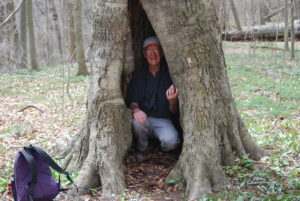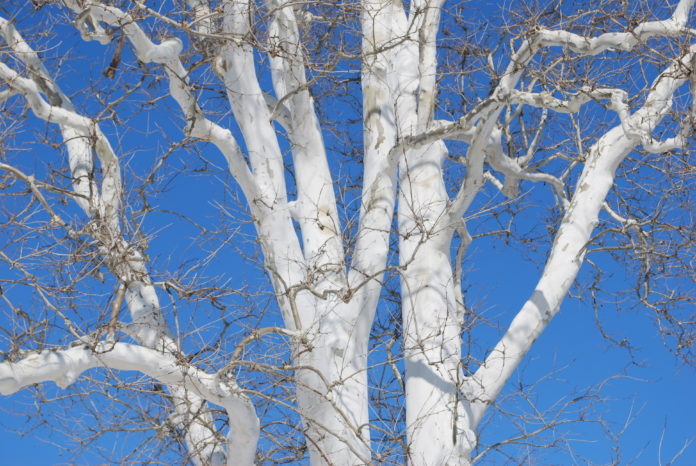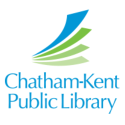By Larry Cornelis – President, Sydenham Field Naturalists
This is a question I get every time I show this species of tree to someone.
The answer is an American Sycamore, hands down my favourite tree species.
The pale, white-mottled bark, ball-like fruit (seed cluster), and large maple-like leaves make Sycamores instantly recognizable.

It’s the bark that caught my attention as a child going to school in Sarnia.
At the back corner of the schoolyard was a Sycamore with it’s white-mottled branches that in my mind (Grade 1) reminded me of snakes.
Even today, I have a 3’ branch, about 2.5” thick on the dining area floor under our china cabinet.
A friend that was visiting commented that it ‘looked like a snake’.
Told you so!
I said to my wife who can’t believe she has a tree branch in her dining area.
I was taking a rest on a park bench when a couple stopped to chat a bit and she pointed at a tree close by and asked, ‘isn’t that a Sycamore?’.
Hey, I was impressed.
But my answer wasn’t straight forward because I suspect the tree in question is actually a hybrid.
A cross with a London Planetree or an actual London Planetree.
A London Planetree is itself a hybrid, being a cross of American Sycamore and the Oriental Sycamore.
In the late 18th century an English naturalist explorer, John Tradescant, returned from a trip to Eastern North America with seeds and seedlings of American Sycamore (Platanus occidentalis) which were planted in botanical gardens in London England where the Oriental Sycamore (Platanus orientalis) already grew, (brought home from China earlier in the century).
Here, the two distinct species did something they couldn’t do living on distance continents and they cross pollinated.
This created the hybrid, ‘London Planetree’.
This hybrid is planted extensively around the world.
The American Sycamore is a large massive tree, a contender with the Tulip Tree as the largest tree species east of the Mississippi.
The USA champion is a reported 15’ in diameter and historically there were 20’ diameter specimens.
They typically grow along river banks, in floodplains and swamps.
Obviously, they like water.
They have thin bark layers and are easily damaged by ice flows in spring floods.
Infection sets in the wounds and heart rot will usually hollow out the trunk.

There are a lot of hollow Sycamores and I have stood in many of them, sometimes with two or three other people.
The bark is the most unique and distinguishing characteristic of a Sycamore although it can be quite variable from tree to tree.
Bark on branches can be pure white or white mottled with pale cream, cream and tan.
The same with the lower trunk but it can also be dark and scaly.
Sycamores really stand out in river valleys during the winter when their white branches make them very conspicuous among other trees.
Especially on a full moon night.
Another distinguishing feature is the fuzzy spherical seed clusters giving rise to an old-time name, the ‘Buttonwood’.
This is where you can most easily distinguish an American Sycamore from a London Planetree.
Sycamores seed clusters/balls typically hang one ball per seed stalk (peduncle) but sometimes two.
London Planetree typically has two or three (sometimes up to five) seed balls on one seed stalk.
Sycamore are wind pollinated and this is why the Sycamore cross pollinates with Planetree.
This results in genetically contaminated seed, a problem for the future of our native Sycamore.
The tree in the park I mentioned earlier has mostly two and three seed balls per seed stalk so it’s a London Plane.
Unless you have a particularly large backyard, I don’t really recommend planting a Sycamore.
They should be planted in ecological restoration projects along rivers and in low lying floodplains.
So, go for a drive in the country and see if you can find a beautiful tree, my favourite tree, the American Sycamore.
For more details, visit: http://www.sydenhamfieldnaturalists.ca/
















